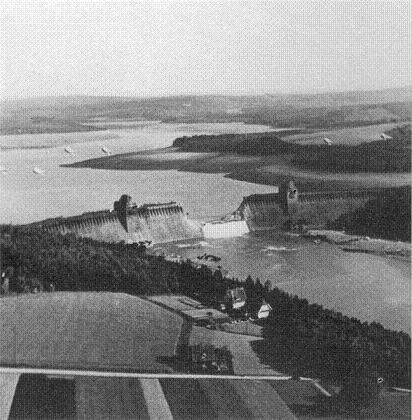
Matthew Leitch, educator, consultant, researcher
Real Economics and sustainability
Psychology and science generally
OTHER MATERIALWorking In Uncertainty
Barnes Wallis, the Dambuster
Barnes Wallis was an engineer who is most famous for inventing the bouncing bomb used to destroy dams in Germany during WWII. In the movie ‘The Dambusters’ released in 1955, he was played by Michael Redgrave.
However, although the bouncing bombs seem like an astounding feat of original design engineering, they were just a part of his much bigger scheme. Even before the war began, Wallis was theorising about what it would take to win the impending war. He realised, ahead of most people, that war had become a conflict between industrial nations, not between armies. The capacity to manufacture and supply weapons and other equipment was on a massive scale. The factories were massive. The sources of power to drive the factories were massive. The concrete structures built to house and protect those assets were also massive and strong.
The small bombs then favoured by the Royal Air Force on the basis of successful experience in the Middle East were simply not big enough to do serious damage. Wallis gathered data on explosives and other relevant subjects and calculated the size of bombs needed, the size of aircraft needed to carry and drop them, and the height those bombs would need to be dropped from. He learned that bombs exploded under ground would do more damage than bombs exploded in the air or on the surface. He realised that a streamlined bomb dropped from sufficient height, and properly constructed, could bury itself deep in the earth before exploding.

The bouncing bomb was an extension of his thinking. At the time it was not possible to drop bombs accurately enough from a great height to destroy a dam, and a torpedo attack would have been stopped by the protective nets. The bouncing bomb did exactly what was required, skipping over the nets then settling underwater, close against the face of the dam.
As everyone knows, the bouncing bombs worked, disrupting manufacturing in the heart of Germany. This picture shows the Mohne dam after the attack.
Wallis returned to his initial concept of large, streamlined bombs and these too were successful later in the war. The first of his ‘earthquake’ bombs was the Tall Boy (6 tonnes) and this was followed by the Grand Slam (10 tonnes). Even dropped from the altitude aircraft of the day could reach these bombs hit the earth at supersonic speed and exploded 20 metres below the surface. They were used on targets such as the V2 rocket launch sites, submarine pens and similar concrete structures, on the Tirpitz battleship, and on bridges.
| Working In Uncertainty observations |
At first glance, Barnes Wallis just seems like a brilliant workaholic and he might even be accused of overconfidently predicting the nature of war in the 1940s. Look closer, and you can see that he used some powerful strategies. While others were simply assuming that the next war would be like recent experience in the Middle East, Wallis thought about the differences involved in Europe and made a more appropriate extrapolation. He then drew on his knowledge of fundamental science to estimate, at least approximately, what modern conditions implied for weaponry. This is an example of basing predictions on the most certain available information. He then set about systematically developing his knowledge of all matters relevant to his strategy, including explosives and the locations of major industrial assets in Germany and, later, Italy. He developed technologies needed to make his ideas work, subjecting everything to painstaking testing, knowing that even with his calculations and predictions reality could be different for reasons that were hard to predict every time. |
|---|
(Source of information: ‘Barnes Wallis’ by J E Morpurgo, published 1972 by Longman Group Limited.)
Made in England